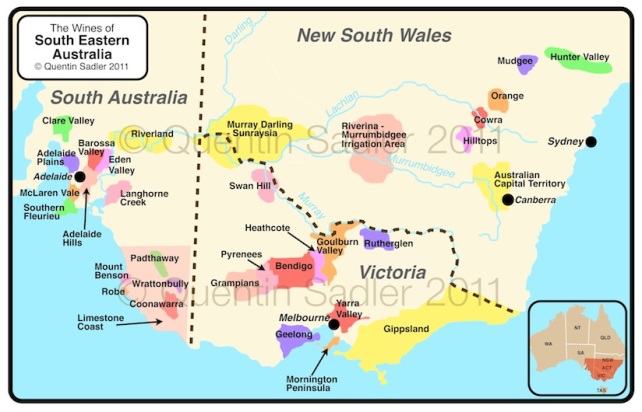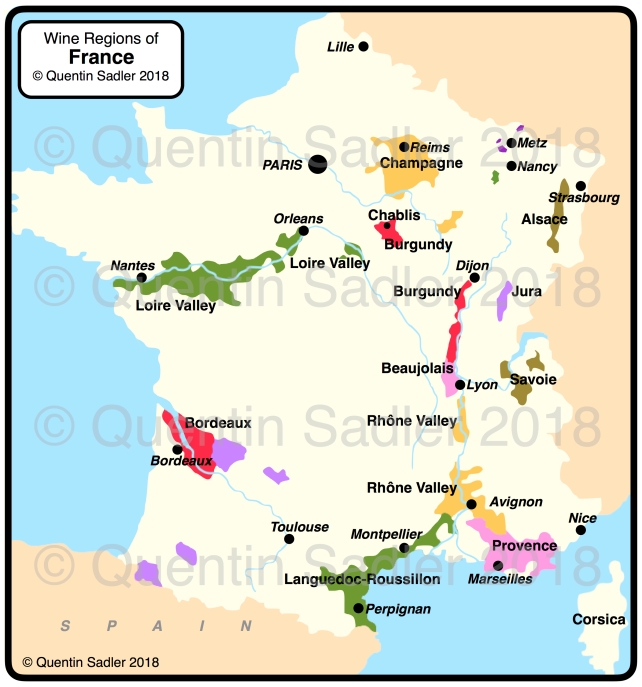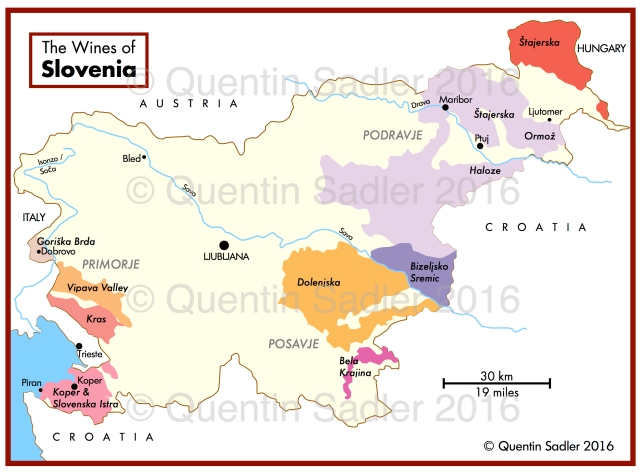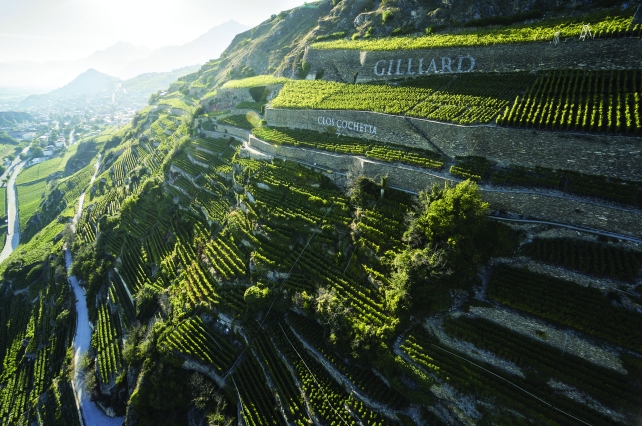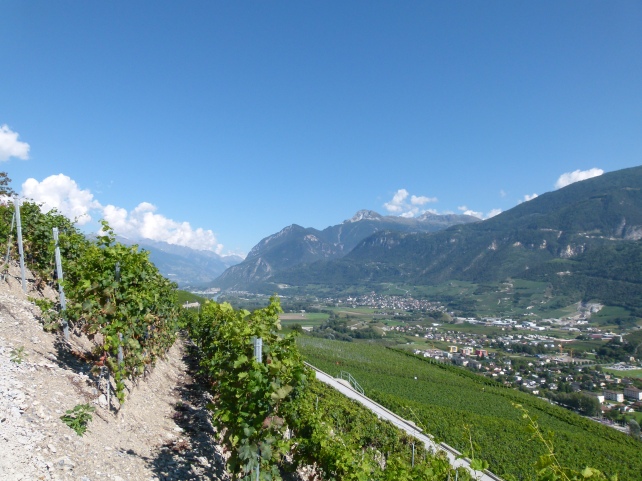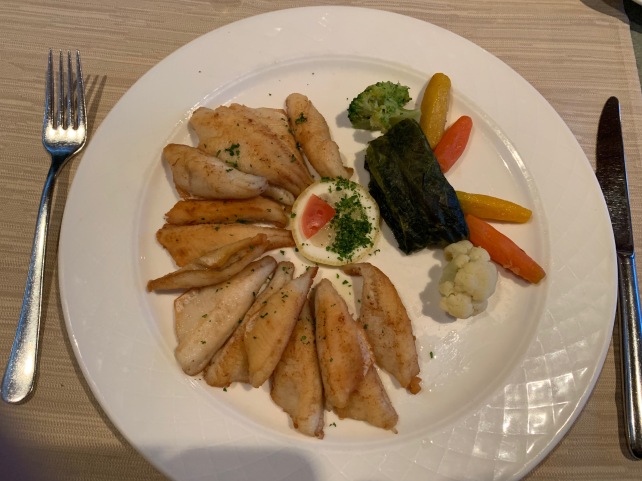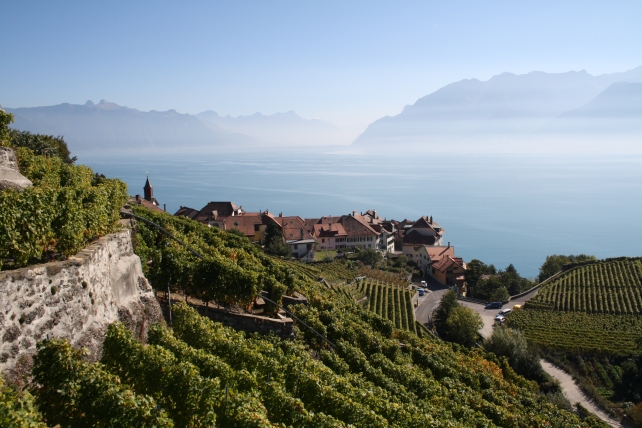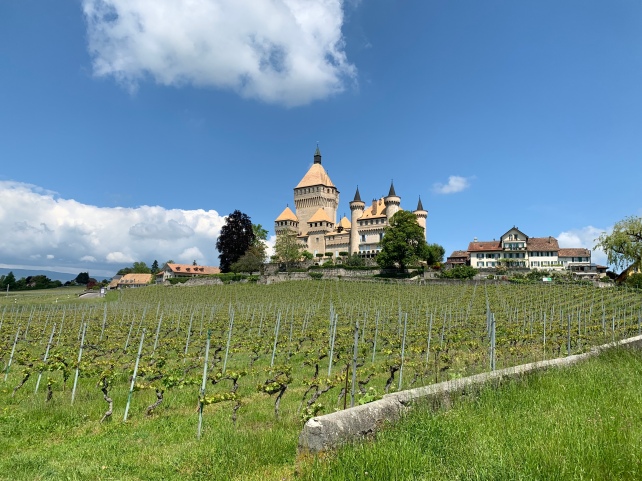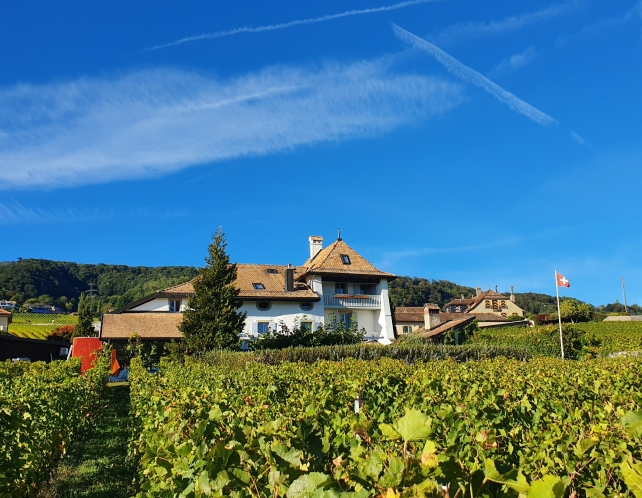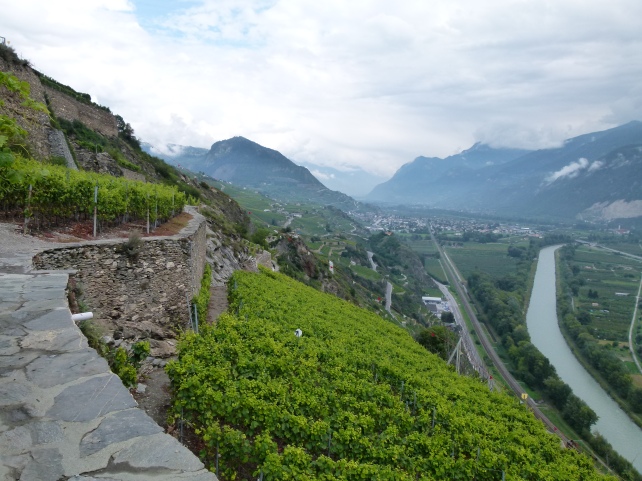Touring Frapin’s Château Fontpinot is an incredible experience. The Château is a very beautiful place, while the cellars are a veritable warren with floor after floor of Cognac peacefully ageing in ancient barrels.
The very oldest Cognacs are kept in glass demijohns with the most venerable being the 1870 – harvested when Napoleon III was still on the throne of France!
Today Frapin are rightly regarded as one of the outstanding Cognac producers, famous for creating high quality artisan spirits with a beguiling complexity. This reputation builds on their heritage as the Frapin family have been growing grapes and making wine and Cognac on this site for hundreds of years. Originally from south-west France, they arrived here in 1270, settled near Segonzac – now the heart of the Cognac AOP – and became grape growers and winemakers, only becoming distillers in the Seventeenth Century. Today the company is led by the charming Jean-Pierre Cointreau, a direct descendent and the 21st generation of the Frapin family to work here. There have been many extraordinary ancestors along the way, but the most famous must be François Rabelais, the Renaissance satirist, whose mother was a Frapin.
I had been invited to Cognac to experience what Frapin do and to hear their unique story. They have some charming nineteenth century offices and cellars in Segonzac, but the centrepiece of the operation is the beautiful Château Fontpinot. This was originally a defensive homestead in a troubled landscape. The area had been ruled by the English as part of the Angevin Empire from 1145-1214 and was where wars between France and England raged for centuries.
The Château as we see it today, complete with its three Second Empire style towers, was finally completed in the 1870s and sits in 300 hectares of land, 240 of which are planted with vines. Almost all of the plantings are the Ugni Blanc grape variety, known as Trebbiano in Italy. It’s a neutral, high acid grape which makes the perfect base for Cognac, whose character comes mainly from the ageing process.
Cru Cognacs must contain at least 90% Ugni Blanc, Folle Blanche or Colombard. The other 10% can be made up of a raft of grapes that are considered less good for Cognac; Jurançon Blanc, Meslier St-François, Sélect, Montils, Sémillon or Folignan – a new cross of Ugni Blanc and Folle Blanche. As well as the Ugni Blanc, Frapin grows some 5 hectares of Folignan. The grape regulations are less restrictive for Cognacs that have no Cru name on the label.
It is easy to forget about the relationship that wine has with Brandy, but of course they have to make wine first – Vin de Charente – before they can turn it into Cognac. I was especially struck by something that, Frapin’s export director, Bertrand Verduzier said. ‘In Cognac, it’s very important to realise that with each harvest you are preparing for the next 15 to 20 years when the wine will be sold,’ this is because it is largely the ageing process that develops the character and complexity of the final product.
Of course ageing is not the only way to get difference in Cognac, location and terroir matter too – which is why there are different Crus. The Crus are the sub-zones that make up the Cognac AOP region and as the soils vary in each one, so the Cognacs are different too.

Map of the Cognac Region showing the Crus and the location of Château Fontpinot – map by Quentin Sadler, click for a larger view.
A map of the Cognac region always reminds me of an archery target and indeed the most highly regarded zone is Grande Champagne, right in the centre – the bull’s eye if you will. This hilly zone grows its grapes in the lightest, most chalky limestone soils and as a consequence produces the most sought after Cognacs. Chalk is really well draining, but at the same time retains good moisture for the grapes to access in the summer ripening season. Chalk also retains a high acid level in the grapes. This high acid and the base wine’s neutral character gives a perfect canvass for the ageing process that comes later – just as it does for sparkling wine in Champagne.
Petite Champagne is the next most prestigious zone, but with more compact limestone soils. Cognacs made from a blend of Grande and Petite Champagne can be labelled as Fine Champagne.
Borderies is the smallest zone and has flintier soils, while Fin Bois and Bons Bois have more mixed soils that include limestone as well as clay and sand. That all important limestone has all but disappeared once we get to the outer ring of Bois Ordinaries and been replaced by sand, which results in heavier and fruitier eaux-de-vie.
Frapin’s estates are the largest single domaine in the Grande Champagne area and one of the things that sets them apart is that they only use grapes from their own, immaculate, vineyards. Cognac making is an expensive and long drawn out process and Frapin do everything on site, grape growing, vinification, distillation and ageing, as they believe that is the way to achieve the highest quality. They like fruit character in their base wines that shows in the finished Cognacs, so they harvest a week or so later than is normal – to achieve more ripeness – ensuring their base wines have slightly more alcohol than normal, 10-12% as opposed to the more normal 8-10%.

One of six copper Alembic Charentais stills at Frapin. The gentleman is Philippe Antony the Export Manager – photo by Quentin Sadler.
Distillation is carried out before the warm weather sets in as heat is thought to be damaging to the young spirit. The law requires all distillation to be complete by the end of March following harvest, but Frapin prefer to get it all finished by February. Distilling takes place in their traditional Alembic Charentais stills. This is a type of pot still, so a batch process, rather than continuous, meaning the resulting spirit is not as pure as vodka and instead has lots of flavour and a fruity character. In fact, in order to achieve the desired 70% it has to be distilled twice. The whole process massively reduces the amount of liquid that they are dealing with – two and a half million litres of wine gives them just 250,000 litres of eaux-de-vie. Interestingly Frapin distills the base wine on its lees – yeast sediment – to give a richer, more complex texture to the Cognac.
After the distillation is complete, you have colourless eaux-de-vie. It cannot yet be called Cognac until it has been aged in oak casks for at leat two years. This will give it colour, more aroma and make it more complex. I sniffed a new, medium-toast, oak barrel that had been filled with eaux-de-vie for a year and already it had wonderfully enticing aromas of vanilla, coconut, figs, caramel and spices. Frapin prefer to use Limousin oak casks as it has a more open grain and so delivers richer aromas and flavours.

How the eau-de-vie develops as it ages in barrel. From left to right, the new, clear eau-de-vie is clear, then after 2 months, 3 months, 6 months, 9 months and after 12 months – photo by Quentin Sadler.
The ageing regimes for the different grades of Cognac are:
VS (Very Special) – at least two years ageing in oak.
VSOP (Very Superior Old Pale) – at least four years ageing in oak. XO (Extra Old) – at least ten years ageing in oak.

Cellar Master Patrice Piveteau leading a Cognac tasting over dinner at Château Fontpinot – photo by Quentin Sadler.
It is the ageing that really sets Frapin apart. All their Cognacs come from their own vineyards, so the points of difference between their styles comes largely from that ageing process. The Cellar Master is Patrice Piveteau, who has 27 years experience at Frapin and seems to have developed an intuitive feel for how the Cognacs respond to ageing in different cellars and for different lengths of time. He likes to age the eaux-de-vie in new casks for the first few months before transferring them to older barrels which impart less overt oak aromas and flavours.
To create great complexity they use two types of cellars, humid cellars on the ground floor and the dry cellars high up under the eaves. The humid cellar is the classic cellar of the region, as there is a damp maritime climate here. Ageing in a humid cellar gives a Cognac more roundness and suppleness.
The dry cellar is upstairs under the roof where it is hot, so more of the Cognac evaporates. This concentrates the aromas and Frapin believe it makes a finer product. This dry cellar is where Patrice likes to age the vintage Cognacs.
On tasting it seemed to me that the dry cellars create Cognacs with lighter, more pure and citrus characters, while those aged in the humid cellars are richer with more toffee, caramel and softness.
During ageing the Cognac evaporates at the rate of about 3% per year, losing water and alcohol. This is called la part des anges, or ‘the angels’ share’. By the time it comes to bottling the Cognac has decreased in strength to around 45% and is usually further reduced to 40% by the addition of distilled water prior to bottling.
Frapin hold the biggest stock in the whole of Grande Champagne. In fact at any given time they are sitting on about 16 years worth of stock – some 12 million litres – ageing in twenty cellars spread over four locations around the estate. As you might imagine, as there is a lot of dry wood around and very flammable alcohol, they are rightly frightened of fires, and this system spreads that risk.
The oldest stocks still being aged are kept in their Paradis cellar, which is thick with mould because it is very humid here which allows a long slow ageing to develop complexity. It also allows a slow evaporation to concentrate the aromas and flavours.
Their very oldest Cognacs – like the 1870 vintage – are kept in glass demijohns because that way it does not evaporate, develop, or age any more. Unlike wine, Cognac always stays the age it was when bottled.

The 1870 vintage Frapin stored in glass demijohns – when the grapes that this was made from were harvested, Napoleon III was still on the throne of France! – photo by Quentin Sadler.
I cannot emphasis enough what an experience it is to visit these cellars. They would appear to have never been dusted and the spiders webs cover everything. Every now and again we would stumble across seemingly forgotten corners with antiquated bottling machinery, all manner of cellar equipment from a bygone age and dusty desks strewn with paperwork and fascinating promotional material from the nineteenth century. It really is like a living museum.

An old desk in a hidden corner of Frapin’s cellar. There is still paperwork on it from the nineteenth century and the pigeonholes are stuffed with old publicity material and memorabilia – photo by Quentin Sadler.

A beautiful carved wooden exhibition stand created for a trade fair in 1889. Today it just sits in the cellars and is all of fascinating old bottles of Frapin Cognac – photo by Quentin Sadler.
Of course the final element in the production process might be the most important of all – the choosing and blending of casks. Patrice has to select the different barrels and blend them to create distinctive Cognacs that convey the Frapin style and their sense of terroir.
Because everything is done on site it always feels like an artisanal business, and indeed it is. The volumes they make might seem large to you and me but they are nothing compared to the big four of Hennessy, Rémy Martin, Martell and Courvoisier who between them produce around 80% of all Cognac. The sense of commitment and continuity is clear in everything they all say and do, as is the pride taken in the quality of the products they create. It has had to be that way I suppose to survive as a family business in this time of big brands, takeovers and multinational ownership. Frapin has taken the long view and it really shows when you taste their Cognacs. It was a great privilege to see and to taste what they do, so here are my thoughts on the Frapin range:
Rancio by the way is originally an Iberian term most famously used to describe the characteristics of maturing Tawny Port. Rancio Charentais is used to describe Cognac as it ages, especially after around 10 years of ageing.
The house cuvée, named in honour of the year the Frapin story began, is a great introduction to the Frapin style.
It is floral and vinous with nice freshness balanced by touches of caramel, toast, nuts and vanilla.
The extra ageing for this category introduces richer layers of orange, apricot, richer caramel and even some chocolate notes as well as the spice and the creamier vanilla which delivers a slight touch of fudge. There are also still real nuances of the wine beneath, with lavender notes, pastry and cracked black pepper.
The long finish is dominated by dark, bitter chocolate and playful floral flourishes.
The extra ageing in the humid cellars really does show here with an enticing burnt orange colour a richly elegant bouquet of dried orange, dried fig, cinder toffee, salted caramel and coffee. The palate gives more power and roundness, with cinnamon, clove and ginger, as well as dried orange peel, pear, dark chocolate and walnuts. The power on the palate does not obscure the freshness though and the length is incredible and the rancio flavours are beginning to show.
This hugely complex cuvée is made from Cognacs that are at least 40 years old and it shows. The colour is a deeper, almost mahogany, with swirls of toffee through it. The nose is lifted and aromatic, while the palate is fuller, more rounded and spicier, saltier and more umami before a wonderful mix of smoky toffee, caramelised orange and spices return to dominate the beguiling finish.
The rancio characters that develop with long ageing are quite apparent here.
Named in honour of François Rabelais, who was a writer, hence Plume, this is another extraordinary cuvée. This time the Cognacs in the blend are at least 60 years old and are all aged in the humid cellars, which means that Plume is a richer style. There is more dried fig here, rich orange, dried apricot, molasses too, while the palate is full flavoured and seductive with rancio characters of vanilla, cloves, Tawny Port, cedar wood and tobacco.
A paler and more subtle XO that dances across the palate showing freshness and richness by turn.
The texture is wonderful, silky and mouth filling and there are complex and beguiling rancio flavours, spices, vanilla, candied orange peel, cinder toffee, glimpses of chocolate, coffee and caramel.
I liked all the Cognacs, but found this extremely moreish.
Unusually for Frapin this cuvée spends 12 months in new oak at the beginning of its ageing regime, rather than the normal 6 months. It is then aged for at least a further 19 years before and the difference shows with a deeper colour and a more autumnal feel with dried fruit, walnuts, toffee and vanilla aromas and flavours as well as smoke, cigar-boxes and sandal-wood.
Strangely this has some of the flavours of a good Tawny Port or even a fine Amontillado Sherry at times.
This could hardly be more different from the Cigar Blend. It is bottled at cask strength, 45.5% alcohol and is paler, but very aromatic and suave, with honey, vanilla, spice, black tea, seaweed, umami, caramel and dried fig notes, together with a long and complex aftertaste. Again the rancio character is really beginning to develop here and again there are plenty of glimpses of the original wine.
This is their seventh multi-vinatge release and is a blend of the 1989, 1991 and 1993 vintages. They were aged for 30, 28 and 26 years respectively in the dry cellars. The colour is slightly paler and the nose is floral, aromatic and spicy. The palate is lighter too, lithe somehow with real depth and captivating complexity, but a lightness of touch with vibrant citrus notes, nuts and salty caramel on the long finish.
Frapin also release tiny quantities of sublime vintage Cognacs. 1988, 1989, 1990, 1991 are all available and they have just released 3000 bottles of the 1992.
We all need cheering what with the nights closing inn and winter creeping up on us and the travails thrown at us all in 2020. I reckon a drop of Frapin after dinner could be just the thing to bring a smile back to our lips. They are complex and fine Cognacs, worthy of contemplation, but above all they are delicious and give huge amounts of pleasure.
Frapin Cognacs are distributed in the UK by Louis Latour Agencies.







































